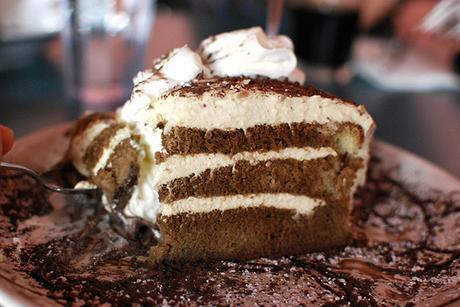What is the Ketogenic Diet?
The ketogenic or “keto diet” is a very specific high-fat diet regimen used mainly for weight loss and therapeutic purposes to treat seizures or certain severe and rare metabolic diseases mostly in children. It’s based on a large intake of lipids or fats (70% to 90% of the diet) and a massive reduction of carbs. The fats are then converted into ketones, which provide energy to the brain and the body.
This diet is called ketogenic because it causes increased production and release of ketone bodies in the blood ( a state called ketosis ) thus supplying the body mainly with fats and very limited amount of carbohydrates .
The principle of the ketogenic diet is based on a simple rule : decrease the carbs and increase the fats. This diet is used for nearly a century, including on children with epilepsy. In recent years this diet has been gaining interest and gets special attention from doctors and researchers, because of the therapeutic properties it has on other diseases such as Alzheimer’s disease, Parkinson’s disease, brain damage caused during cerebral vascular accidents (stroke), obesity and overweight, diabetes and cancer. So, the ketogenic diet approach could possibly help to improve and save the lives of many people in the long run.
Reduced glucose levels in the blood will force the body to adapt to the deprivation and draw on its reserves to produce energy. Instead of the getting this energy from the greatly reduced carbohydrates, the body will use the fat from food and body fat cells, which are then transformed into ketone bodies, which supply the neurons and cells with energy.
That way this diet would have the property to slow down Alzheimer disease and progression of cancers by changing the energy supply patterns of the sick or cancerous cells. For example, Alzheimer’s disease hinders the ability of neurons to draw their energy from carbohydrates, so the ketogenic diet allows your body to tap into the energy of fats, through the ketone cell bodies produced by the liver.
Ketosis has long been used as a therapy in children with epilepsy and more recently, in patients with’ Alzheimer’s or Parkinson’s diseases!
In short the basic idea of the keto diet is to consume a lot of fat, just enough protein and very little carbs. This may seem confusing at first, but eating ketogenic is healthy, extremely varied and tasty.
Main principle of the keto diet
The ketogenic diet can be used by anyone that needs it, so it’s based (and should be) on few very simple principles:
- Eat carbs in very small amounts : a maximum of 50g per day
- Replace sugar with “good fat” i.e omega-3, omega-6 fatty acids from fish, canola or flaxseed oil, flax seeds and a good supply of omega 9 from olive oil…
- Consume just enough, but not too much protein at every meal
The key is to add healthy fats like these :
- Olives and olive oil,
- Coconut and coconut oil,
- Butter,
- Nuts , especially macadamia nuts, low in protein and in omega-6,
- Yolks of organic eggs and organic meats (or substitute),
- Avocado
What Foods are Allowed when you are on a Ketogenic diet:
Fish, seafood, meat, poultry, eggs, butter, vegetable oil, vinegar, lemon juice, olives, avocado, vegetables low in carbohydrates such as leafy green vegetables (spinach, lettuce types, endive, cabbage, kale, chard), cheeses (maximum of 100 g per day).
Also, cheese, cream, meats, seeds, vegetable oils, duck fat, yoghurt, oily fish, … all are permitted. Priority is also given to fats that contain medium chain triglycerides (MCTS) which promote the transition to a state of ketosis. The champion in the MCTS field: coconut oil .
What about proteins? Well, just have a normal and optimized protein diet with an intake of 0.8 – 1 g per kilo of body weight. In addition we also limit the carbs, because a very low carbohydrate intake is the main required factor for your body in order to enter in a state of ketosis.
Fruits should be reduced too, with the exception of the red berries (50 g per day max), and instead we would be focusing on consuming grains and starches and vegetables poor in carbohydrates: lettuce, mushrooms, cabbage, cauliflower, Chinese cabbage, celery root and chicory.
Foods to avoid :
- breads, pastries, cereals
- pasta, rice, potatoes, couscous, corn, quinoa, buckwheat, dried vegetables
- cooked dishes
- cookies, pastries,
- milk chocolate or chocolate with less than 85 % cocoa, candy, jam, honey
- fruit, except the less sweet ones
- sodas except the ones with 0 % sugar.
Now After you know the main basics of the keto
Check out these 25 Delicious Ketogenic Diet Recipes
Few Notes: The anticonvulsant properties of this diet are well known, but it can only be used with a medical prescription, and requires strict supervision by a specialized medical center.
The Ketogenic diet is not recommended for pregnant women, diabetics, people with heart disease and other serious conditions. Please consult a specialist, your doctor or dietitian before you follow this diet.
The ketogenic diet is also used by bodybuilders who wish to lose fat. But mostly, the ketogenic diet allows you to be in good shape and to fight effectively against cancer to the extent where the affected cells would be really hungry without the carbs supply. However, this diet is not recommended for people with type 1 diabetes due to a high risk of Diabetic ketoacidosis (DKA) in these individuals. It is also not recommended in pregnant and lactating women, in individuals suffering from renal failure…. (please do not hesitate to seek the advice of your doctor before you would be able to undertake such a diet plan).

